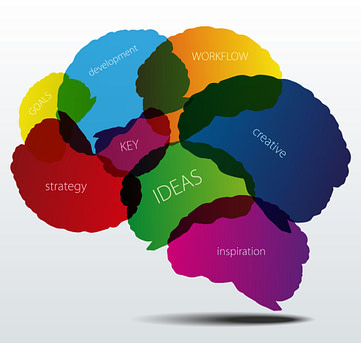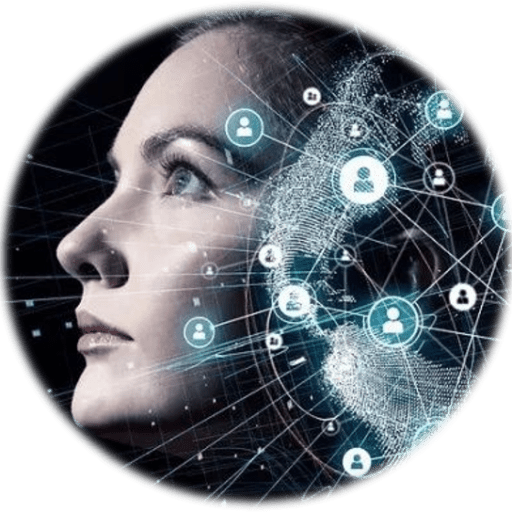Unfortunately, this is not a term that is easy to define unambiguously. Intelligence can mean many things to different people. The scientific community has been debating this since at least the late 19th century. Without going into a long discourse, intelligence is defined in a popular sense as a general mental ability to learn and apply knowledge in order to change the environment most effectively for the intelligent agent, in our case – humans. Recently, some scientists rejected the idea of a single intelligence and instead have suggested that intelligence is the result of several independent abilities, which when combined contribute to the total performance of an individual. That would include other “intelligences” such as:
- the ability to evaluate and judge
- the ability to reason and have abstract thoughts
- the ability to learn quickly as well as learn from experience
- the ability to comprehend complex ideas
- the capacity for original and productive thought

Robert Sternberg, a psychologist, proposes that there are three fundamental aspects of intelligence: analytical, practical and creative. He believes that traditional intelligence tests only focus on one aspect – analytical – and do not address the necessary balance from the other two aspects.
How could we measure intelligence? The current “gold standard” of measuring intelligence is Intelligence Quotient (IQ). Wikipedia defines it as: “… a total score derived from several standardized tests designed to assess human intelligence. Historically, IQ is a score obtained by dividing a person’s mental age score, obtained by administering an intelligence test, by the person’s chronological age, both expressed in terms of years and months. The resulting fraction is multiplied by 100 to obtain the IQ score. When current IQ tests were developed, the median raw score of the norming sample was defined as IQ 100 and scores with standard deviation (SD) up or down were defined as 15 IQ points greater or less. By this definition, approximately two-thirds of the population scores are between IQ 85 and IQ 115. About 5 percent of the population scores above 125, and 5 percent below 75”.
Psychologist Howard Gardner’s theory of multiple intelligences states that intelligence can be broken down into 8 distinct components: logical, spatial, linguistic, interpersonal, naturalist, kinaesthetic, musical and intrapersonal. Thus he believes that standard IQ tests and psychometric tests focus on certain components, such as logical and linguistic, while completely ignoring other components which may be equally important. These critical comments make IQ tests not entirely reliable for assessing human intelligence. However, IQ tests are de facto the only standard, which is widely used and despite its weaknesses it allows making some valuable insights into the intelligence and capabilities of millions of people. We may need to improve these tests but in the meantime they are already applied to intelligent assistants, such as Siri or Goggle’s Personal Assistant.
On 3rd October 2017 a test was organized for several AI assistants by three Chinese researchers: Feng Liu, Yong Shi, and Ying Liu, primarily based on exams carried out during 2016. According to researchers, Google’s AI Assistant rating of 47.3 is barely beneath a six-year-old human’s IQ of 55.5. However, it was more than double that of Siri’s IQ of 23.9. Siri is also behind Microsoft’s Bing or Baidu, which have respective IQs of 31.98 and 32.92. All AI’s IQs are considerably lower than a mean for 18-year-old’s which is 97.
The researchers say, that: “The results so far indicate that the artificial intelligence systems produced by Google, Baidu, and others have significantly improved over the past two years but still have certain gaps as compared with even a six-year-old child”. They grade AI’s intelligence into six levels based on the model that combines AI and human traits around four areas of data, together with “input, output, mastery, and creation”:
- First-grade system, which might exchange some information with people
- Second-grade system that can manage the interface to some objects such as TVs or washing machines, the so-called Internet-of-Things (IoT)
- The third-grade includes computer systems and mobile phones, which are programmed and can be upgraded. That would include AlphaGo from Google’s DeepMind
- Fourth-grade include Google Brain, Baidu Brain, and the EU’s RoboEarth robots, because they have the ability to communicate and be managed using cloud data
- Fifth-grade intelligence is at a human level
- Sixth-grade system will have the capability to “continuously innovate itself and create new knowledge, with I/O ability, knowledge mastery, and application ability that all approach infinite values as time goes on”.
The difference between the grades of AI seems to be quite significant. But once it gets to the sixth grade, AI will improve exponentially until it becomes Superintelligence. So what is Superintelligence? You will find an answer in the tab below.

Comments